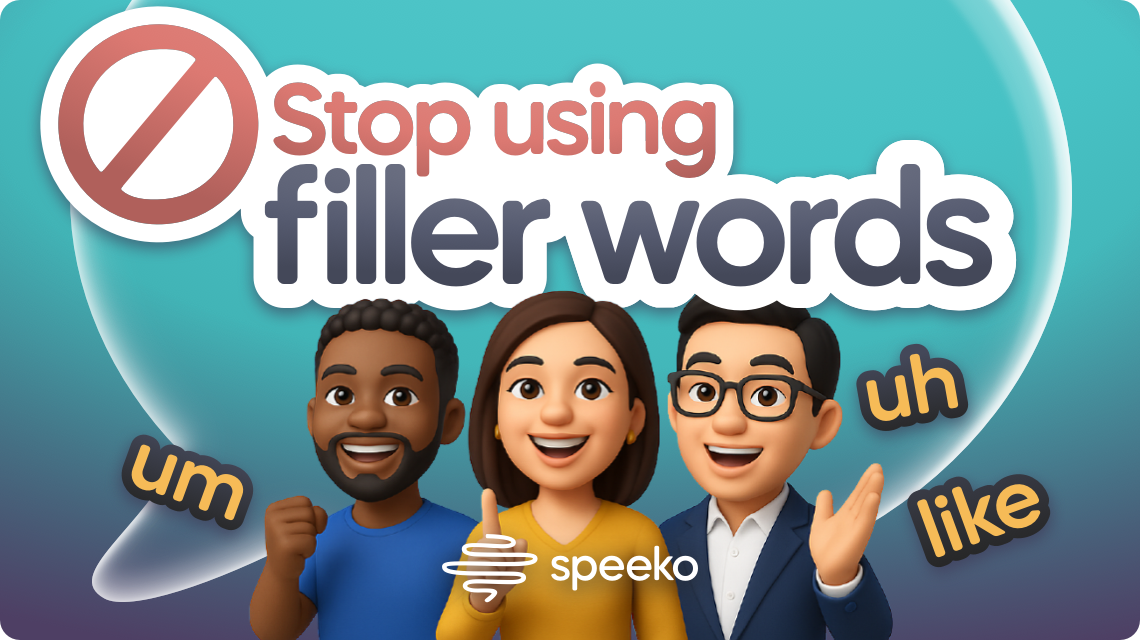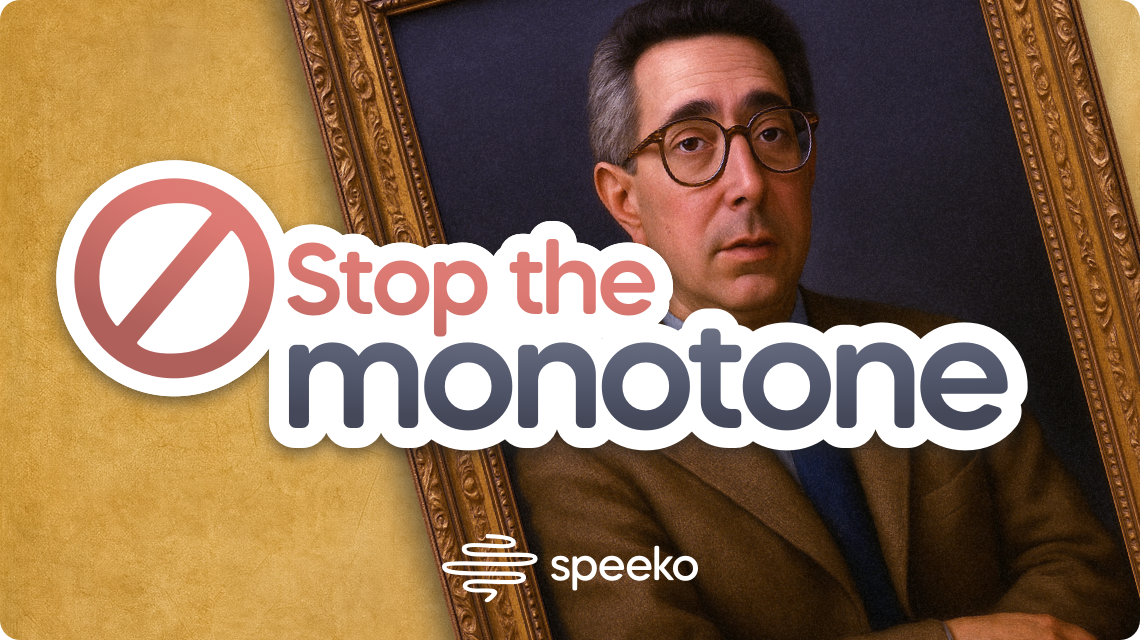How to Speak to a Tech-Forward Audience
Photo credit: Jenna Dosch Photography
Amazon’s announcement last August that PowerPoints were banned in meetings caused quite the splash in Silicon Valley. Banishing eye-candy graphs meant that the competition to create the most dazzling slides was moot, and the speaker became front and center. The voice triumphed over the visual. What were data scientists and product designers to do?
One of the biggest challenges in giving a presentation, especially to a tech-forward audience, is keeping the attention of your listeners. Think back to the last time you were listening to a presentation. Your mind likely wandered whenever there was a dull moment, and there’s a high chance that you looked to your phone for solace. Today, the latest technology headlines update faster than we can articulate them, and make no mistake - those notifications are flooding your audience’s phones at all times.
Fortunately, you can use effective public speaking strategies so that your audience would rather listen to your words than check their Slack notifications under the table. We studied speeches by leading tech figures like Steve Jobs, Mark Zuckerberg, and Reshma Saujani to find what made them memorable for their audiences. Whether you’re preparing for a networking event, panel, or meeting related to technology, these tips are for you. Check out these four strategies for stronger, more efficient communication with tech-forward audiences.
1. Speak with Efficiency
The best communicators get to their point, and they get to it early. This is especially important in a field driven by optimization and fast-paced innovation, where the details of conversations can get complex pretty quickly. In a commencement speech at Stanford University, Steve Jobs gets to his point within the first ten seconds. If you want to keep your audience listening for the entirety (or, more realistically, a majority) of your talk, speak with concision. Choose the most impactful words to deliver your message. You’ll find that selecting one precise word can save you a minute of explanation. To put a finer point to it, more often than not, saying less is better.
The same rule applies to filler words. You know, those little words that can, like, cloud your message? Whereas powerful words will get your message across, filler words will slow that momentum, and your audience will struggle to follow your thoughts. It’s a give-and-take balance that requires practice. Once you get comfortable with your choice of words and how you say them, your audience won’t be tempted to press the toggle button on your forehead to speed up what you’re saying by 1.5x or 2x.
2. Shelve your Steve Jobs voice
Or any <insert influential tech individual> voice for that matter. These leaders are the go-to sources of inspiration for delivering memorable speeches, but channeling their low, forceful style of their way of speaking can be off-putting and even distracting if it doesn’t match how you typically talk. (We’re looking at you, Elizabeth Holmes.)
If you want to connect with your audience, speak with your natural voice. This signals that you are confident and comfortable with your speaking skills. You want to be memorable in your own right, not as a copy of someone else. Practice speaking in a steady tone, varying your pitch and pausing after key ideas. The more you practice, the more command you’ll have of your natural voice - which is perfect for exuding charisma at your team’s next all-hands meeting.
3. Find your story
The best way to capture your audience’s attention from the get-go is to open with a story. People have a natural affinity for narrative, and tech audiences are no different. This is because we are what experts call “emotional listeners.” When we listen to a public speaker, our feelings have major influence over our reception of what is being said.
For example, you can use humor and suspense, personal stories, or fictional tales. Regardless of the theme, a unique story will make your message more memorable. This is especially important when your topic is mostly quantitative. Think of a narrative as a chance to stand out as an insightful person with a philosophical view of the world. And remember, your story can be quoted and shared on social media by your audience, giving your impact even wider reach.
4. Use Repetition
Got a lot of content to share and not a lot of airtime? In this case, you’re in danger of your audience leaving the room overwhelmed by information overload and with a loose grasp of your talking points. It’s a tricky situation to be in. The more content you have, the more likely your audience will zone out.
Take note from Mark Zuckerberg’s Facebook F8 Keynote. Mark was tasked with announcing over fifteen new features across three platforms. If his listeners were distracted for just a moment, Mark would have already moved on to talk about the next feature, and they would end up confused, trying to piece together context for themselves.
But Mark lends his listeners a hand. Mark repeat action words and important phrases to drive home a consistent message. Try this: Instead of saying “we’re running tests, surveys, and marathons,” say, “we’re running tests; we’re running surveys; we’re running marathons.” This method might seem counterintuitive because your goal is to maximize content in a short period of time, but repeating words can help you in two ways: 1) it signals to your listeners that what you’re saying is important, and 2) it helps bring them back into the loop if they’ve lost focus for a moment.
5. Emphasize in more ways than one
In her TED Talk, Reshma Saujani, founder of Girls Who Code, doesn’t let audience members get distracted for too long. That’s because Saujani uses multiple methods to emphasize different points in her message. For example, Saujani combines techniques such as changing pitch, using hand gestures, and pausing to snap audience members out of their daydreaming.
No fancy slide animations necessary.
Recommended
—
By Amanda Wong





